Egypt breakthrough: How lost Tutankhamun artefact was found after ‘vanishing for decades’
Tutankhamun was an ancient Egyptian pharaoh who was the last of his royal family to rule at the end of the 19th Dynasty during the New Kingdom. Known as “the boy king,” he inherited the throne at just nine years old and mysteriously died less than a decade later, with his burial rushed and his legacy seemingly wiped, leading many to claim he was murdered. In 1922, Howard Carter discovered KV62 in the Valley of the Kings, jam-packed with the most luxurious collection of artefacts, along with Tutankhamun’s body.
Now, almost a century later, an item that was thought to have been lost or stolen has reemerged thanks to the construction of a new museum, Channel 5’s “Secrets of Egypt’s Valley of the Kings” revealed.
The narrator said in March: “300 miles north of the valley in Giza, in the shadow of the pyramids, the magnificent treasures found in Tutankhamun’s tomb are getting a new home.
“British archaeologist Howard Carter found over 5,000 artefacts and set the standard for modern archaeology by spending years meticulously cataloguing them.
“However, the huge collection ended up scattered in locations across Egypt.
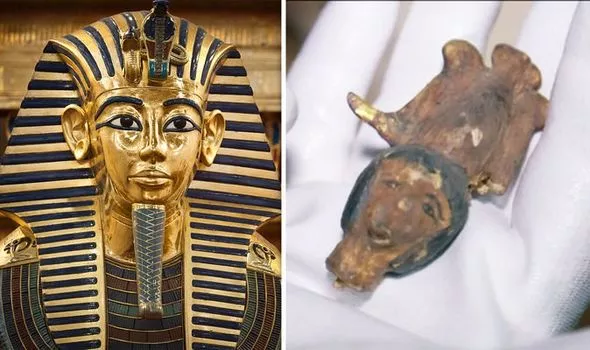
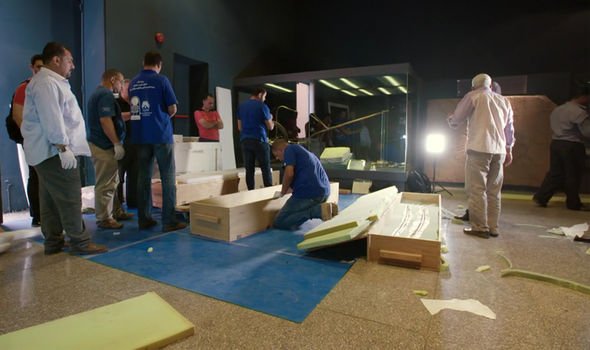
“This £700million museum and research centre will reunite the collection for the first tie in a century.
“Now, in the new museum’s labs, scientists and Egyptologists use modern technology to study and analyse each artefact.”
The series went on to describe how one of Mr Carter’s original boxes was uncovered.
It added: “But some of Tut’s greatest treasures are yet to arrive.
“300 miles south in Luxor, Eissa Zidan is preparing 122 of Tut’s artefacts for their move to Giza.
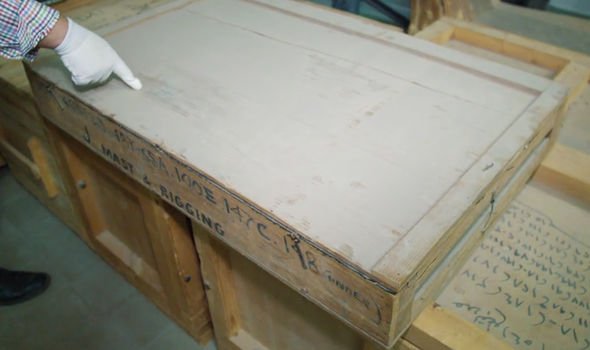
“But a few hours into the packing, Eissa gets some unexpected news.
“During the move, the team have unearthed one of the original boxes Howard Carter used to transport Tut’s treasures out of the tomb.
“It was hidden in the corner of a storeroom and it’s been lost for decades.”
Inside the box, archaeologists found an amazing piece of history. The narrator explained: “These delicate wooden pieces are ancient boat parts and belong to one of the model boats that Howard Carter found in Tutankhamun’s tomb.
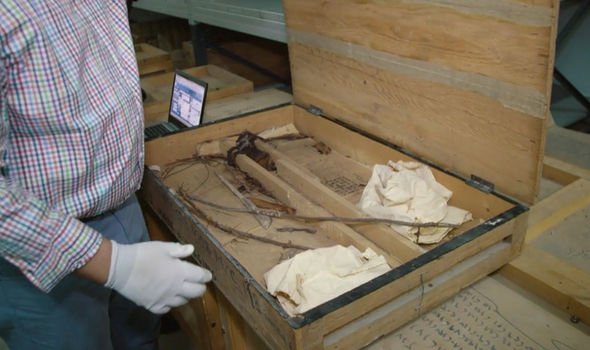
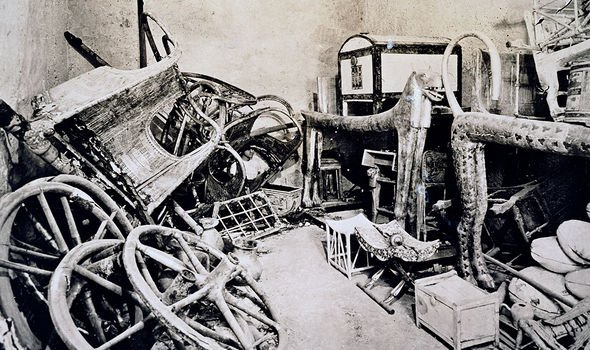
“The idea of eternal life was essential to ancient Egyptians as it is to major religions today.
“They believed the deceased would begin the journey by boat, so model boats were precious grave goods.
“The vessels often came complete with crew, because it was believed the replicas would come to life and help with fishing and transport in the afterlife.”
The afterlife was essential to ancient Egyptians and the goods they were buried with were said to be a key part of the journey.
The series continued: “The pharaohs used a special vessel to sail across the sky for eternity.
“Ordinary people also thought they could reach the afterlife by boat, rowing up the Nile on these models and into the next world.
“Records show that the box was sent to Luxor in 1973, but had gone missing, presumed lost or stolen.
“The mast and the boat must have become separated decades ago.”
The discovery came before the opening of the new exhibition in London: “Tutankhamun: Treasures of the Golden Pharaoh.” More than 150 artefacts have travelled from Egypt to the Saatchi Gallery and will be on display now until May 3, 2020.
For the first time ever, 60 items have left the country, before they return to their permanent home in the new Grand Egyptian Museum next year. Recently closed in Paris, the exhibition became France’s most visited of all time with an attendance of over 1.4 million.





